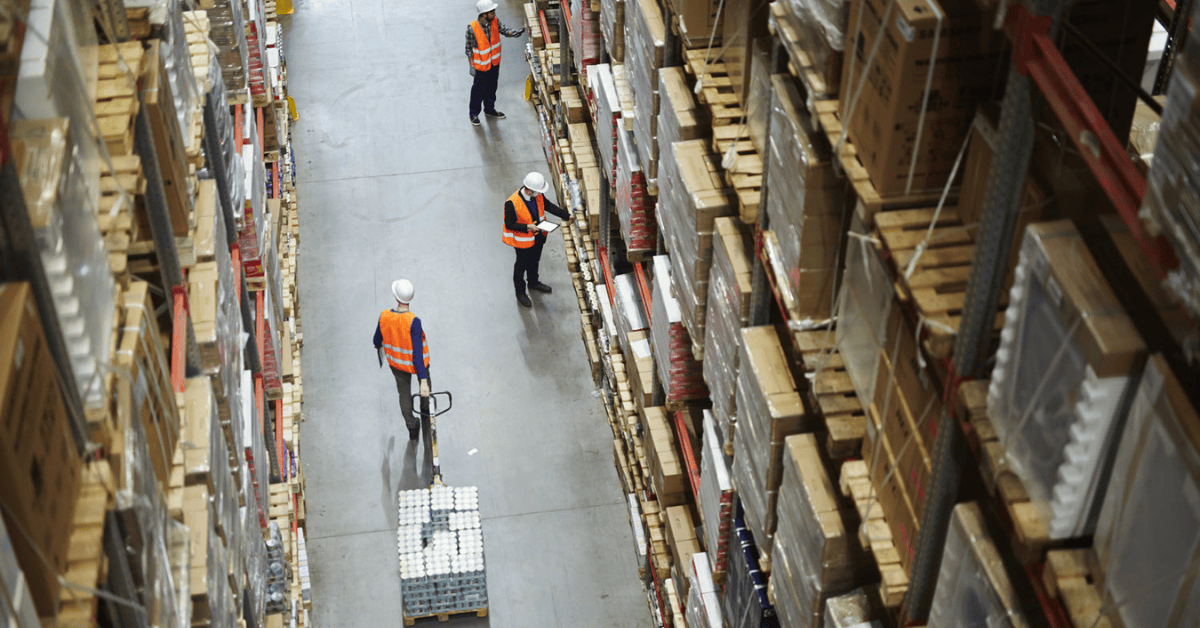From Just in Time to Just in Case: The New Inventory Approach

For decades, industries have been perfecting “just-in-time” inventory management models, ordering products and materials on an as-needed basis to prevent unsold stock.
On average, United States companies reduced their inventories by two percent every year from 1981 to 2000, according to a study in Management Science. By keeping inventories as lean as possible, businesses could reduce their warehousing presence and significantly cut costs.
Then, COVID-19 upended the global supply chain, leaving corporations with massive stockouts, heightened consumer demand and no safety nets.
Instead of waiting for the supply chain to straighten out, most companies are increasing their buffer inventories to minimize the effects of ongoing delays on their buying cycles. Nearly 60 percent of companies told McKinsey they had adopted new supply-chain risk management practices over the past year.
The new approach is called the “just-in-case” model, a balance between the conventional just-in-time system and the panicked stockpile mentality. Here’s what you need to know about the just-in-case strategy and how you can implement it in your business.
What is just-in-case inventory management?
Just-in-case inventory management is keeping larger amounts of inventory for high-demand items to mitigate the risk of supply-chain disruptions.
In a just-in-time model, a retailer may only keep as much product on hand as they go through in a typical week. This approach works well when demand forecasting is accurate and lead times are short. But the unpredictability of the pandemic led to nationwide shortages of critical goods, such as toilet paper, sanitary wipes and personal protective equipment
In a just-in-case model, the retailer keeps more buffer inventories of those essential products in an off-site location to prevent that painful “out-of-stock” message on store shelves.
How does a just-in-case model work?
Company executives start by identifying the most vulnerable parts of their supply chains. They then consider their maximum lead times and demand levels to determine how much safety stock or alternate supply options they might need.
When managed effectively, the potential costs of keeping just-in-case inventory are less significant than the potential revenue losses from shortages and disruptions. Still, companies should have a contingency plan to quickly sell the safety stock if demand suddenly shifts and the goods are no longer needed.
The just-in-case model works best when accompanied by asset-management technology, allowing companies to see their inventory levels in real-time. By staying on top of their inventory tracking, companies can ensure continuity during disruptions without having unnecessary dead stock.
What are the advantages of holding just-in-case stock?
One of the most significant benefits of the just-in-case model is the ability to continue selling goods through global disruptions and delays. Companies can keep their customer-satisfaction ratings high by maintaining safety stock of in-demand items.
In doing so, businesses with just-in-case inventories also have the edge over the competition. When there is a regional or national shortage of a demanded item, the company that can continue to provide it to customers without sharply raising prices will come out on top.
Companies using the just-in-case system can also accept a larger margin of error in their demand forecasts. If political, economic or environmental factors cause their forecasting to be inaccurate, the companies can leverage their safety stock to meet the actual demand without losing time or profit.
What are the disadvantages of holding just-in-case stock?
The most frequently cited disadvantage of the just-in-case system is that it ties up resources by requiring more space, payment, and personnel. However, some companies have overcome that obstacle by partnering with a third-party logistics (3PL) provider to maintain their just-in-case stock.
Companies face less financial risk by outsourcing the warehousing and inventory management to a third party. A reputable 3PL already has an expansive network of owned assets, allowing them to keep buffer inventory and deliver it as needed. Rather than stockpiling goods, a company can stay agile, free up resources and adapt to market changes by hiring a 3PL to execute the just-in-case system.
A recent Reuters report suggests that the future of inventory management lies between just-in-time and just-in-case models — increasing the amount of inventory on hand while staying lean. A 3PL partnership allows companies to effortlessly and efficiently maintain that balance.
Scale your operations without the long-term overhead costs by partnering with Armstrong – Houston for third-party logistics (3PL) services. Armstrong – Houston can manage nearly every supply chain step, allowing you to keep business booming under any circumstances. Get started today by calling 281.897.1118 or requesting a free quote online.
